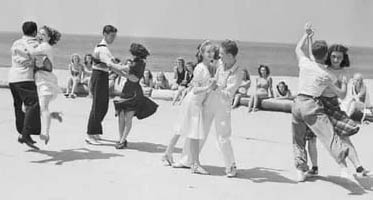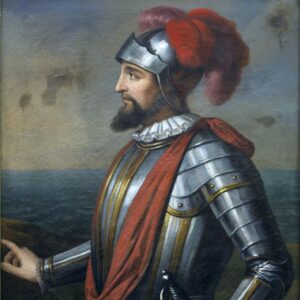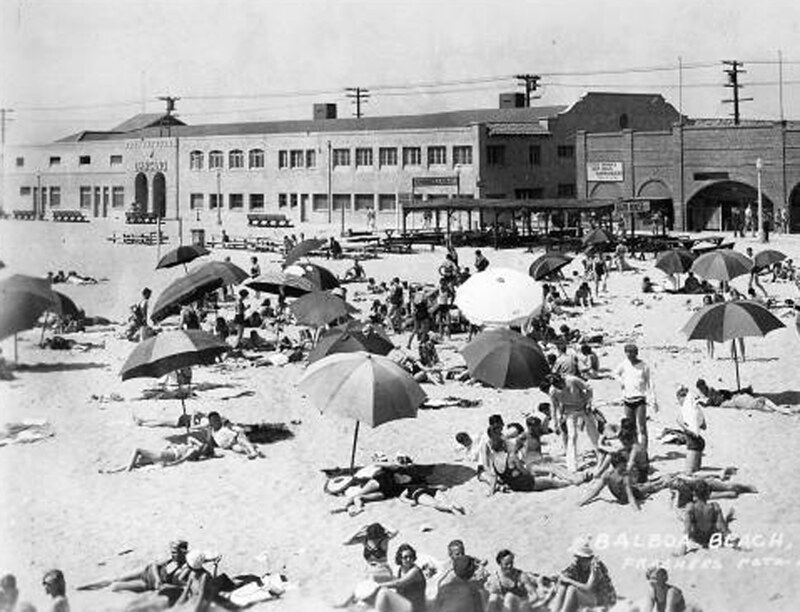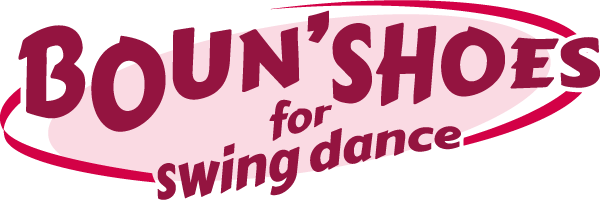Blog
Balboa, all the charm of California

A historical and geographical name, a Pavilion on the Ocean, narrow dance floors and small steps: thus necessity made a virtue and an elegant and incomparable dance style was born.
THE SAILOR WHO DISCOVERED THE PACIFIC
What could an explorer possibly have to do with a dance? Vasco Nunez de Balboa was a 'conquistador' by trade, i.e., he was the captain of one of those Spanish galleons that crossed the Atlantic at the turn of the 16th century in search of new lands, forbidden fruits and possibly deposits of sound gold. It was due to him, in September 1513, the discovery of the Isthmus of Panama, that tongue of land that, until the creation of the Panama Canal, prevented the connection between the two oceans. It was this certain Balboa who discovered, in short, on behalf of the Europeans, that, beyond the Atlantic, well, there was also the Pacific and that Christopher Columbus could not have reached as far as Japan, at least by passing through there, by the short cut between the two Americas. The minimum was to name a coinage after him, therefore, in the following centuries, the Panamanian coinage, and on the part of the United States a small peninsula in Southern California, the territory of Newport Beach, an hour's train ride from Los Angeles towards San Diego. Which was called Balboa.

Vasco Nunez de Balboa
ALL TO THE BEACH AND... AT THE PAVILION
Even less, you might think, could the same dance have anything to do with building speculation. Yet that is exactly what happened. In a letter dated 20 September 1905, the Washington War Department granted the Newport Bay Investment Company permission to construct and maintain, on the new Balboa Peninsula, a building for the purpose of a 'boathouse, bathing establishment and pavilion' with 65 square metres of Pacific water frontage, which immediately became famous for its long sloping roofline and ornate Victorian dome on top: the Balboa Pavilion. It was soon reinforced by an ocean pier and hotel to coincide with the completion of the Pacific Electric Red Car Line, the railway that ran from Pasadena through Los Angeles and Long Beach and terminated in downtown Balboa. All to attract potential land buyers to the originally swampy and unhealthy area. When the railway line was opened on 4 July 1906, almost a thousand bathers stormed the train, which in an hour's journey in red cars delivered them from Los Angeles to Balboa to enjoy the beach, the pavilion and the pier. Rows of fragile seaside cottages quickly sprang up nearby to house them. The Newport Investment Company's plan to invest $15,000 in the Pavilion had worked.
BATHING, PARADES, BARBERSHOP AND SWING!
The Balboa Pavilion originally consisted of a 750-square-metre boardroom on the second floor and a simple bathhouse on the first, where bathers could change clothes and wear the trendy rented costumes. Then came a post office, a barber called 'Lucky Tiger Jack' who could chug his own hair tonic between brandies, Fourth of July beauty parades, boat rentals, excursions. And, of course, the music! In the late 1920s and early 1930s, the Pavilion, by then famous throughout Southern California, also began hosting Big Bands. On weekends one could hear Count Basie, Benny Goodman, the Dorseys. Phil Harris and his band were a regular fixture on weekday evenings.

The Balboa Pavilion
They danced to Jazz and Swing music, with influences from the Charleston and even old ballroom dances like the Foxtrot and Rumba. At that time, Lindy Hop was all the rage in Harlem and would only arrive on the West Coast with the advent of radio broadcasting. But the local dancers meanwhile put together steps and figures adapted to the new 'upbeat' music. With lots of leg spins and swings, twists and separations between partners. Initially, this dance was called simply Swing, a few years later 'SoCal (Southern California) Swing' and 'LA (Los Angeles) Swing'. Among the most well-known protagonists of the swing scene of the time, four couples stood out above all others (so much so that they were called the 'Big Four' of Balboa): Maxie Dorf with Mary McCaslin, Hal Takier with Betty Takier, Lawrence Wise with Lillian Arnold and Gil Fernandez with Venna Cascon.
A NICKEL FOR EACH DANCE
Admission to the hall was free, but to dance in the enclosed dance floor you had to pay a ticket. Not once but... many times. Yes, just like at the merry-go-rounds and the legendary bumper cars of the last century! One nickel at a time to enter the dance floor. At the completion of each piece of music, the side ropes would go down and the dance floor would be quickly cleared. Then the ropes would be put back in place and the dancers would have to use a new nickel ticket to get another turn. But that was not all. Dancers were strongly discouraged from getting too excited. The dance floor was narrow, the crowd considerable, and the notch secured even more than a firm shove. Later, because of this structural weakness of the building, a sign was posted with the eloquent words: 'Jitterbug is forbidden'. Stay calm if you can... This is how Pure Balboa or Pure-Bal, understood as swing dancing, was in fact born. Small, concentrated steps and a very closed position between dancers were required in tight spaces, with no turns and no space. A couple's dance that therefore relies on the complete connection between the two bodies (often for the Balboa, the followers opt for a low-heeled shoe that helps to keep the weight of the body in a 'forward' position and consequently to maintain the connection with the leader), with many weight changes, sometimes invisible to spectators, with fast and synchronised steps between leader and follower, known as footwork. And that includes a basic step consisting of 8 tempos, which are divided into two moments of 4 tempos each. Thanks to this structure, Balboa offers many possibilities for improvisation and adding personal variations to the choreography. And it can also be danced to medium and slower rhythms.
FROM 'PURE BALBOA' TO 'BAL SWING'
In the course of time, however, especially taking advantage of the times when the dance floor was not so crowded, if only out of a desire to liven up the atmosphere a little, some dancers began to include more elaborate and animated variations in the dance, leaving more space in the connection with their partner and occasionally abandoning the 'chest-to-chest' so as to allow spins, twists, leg swings and real acrobatics with no limit to the imagination! This dance, combined with the Pure Bal took the name 'Bal Swing'. However, it remained essential to maintain an upright posture, even in the presence of fast musical performances. The end result: a very elegant dance, while maintaining a frenetic rhythm.
THE RENDEZVOUS BALLROOM FOR THE ULTIMATE CONSECRATION
The popularity of dancing at the Pavilion later led to the construction of the Rendezvous Ballroom, a much larger hall a few blocks away on the waterfront, completely dedicated to the new way of moving on the dance floor. Big names and larger crowds of dancers did not beg to move in and the Pavilion dance era declined. However, the owners still organised dance marathons and marathons to attract dancers especially during the Great Depression. Until, with gambling legalised, the Pavilion turned into a full-fledged casino, with several gaming rooms where patrons could play blackjack, penny roulette and other card games. But the Balboa had by then definitely taken its own path: a hallowed dance, known and practised even outside the borders of California. Elegance, like class, is not water.

The Rendezvous Ballroom
About the author


